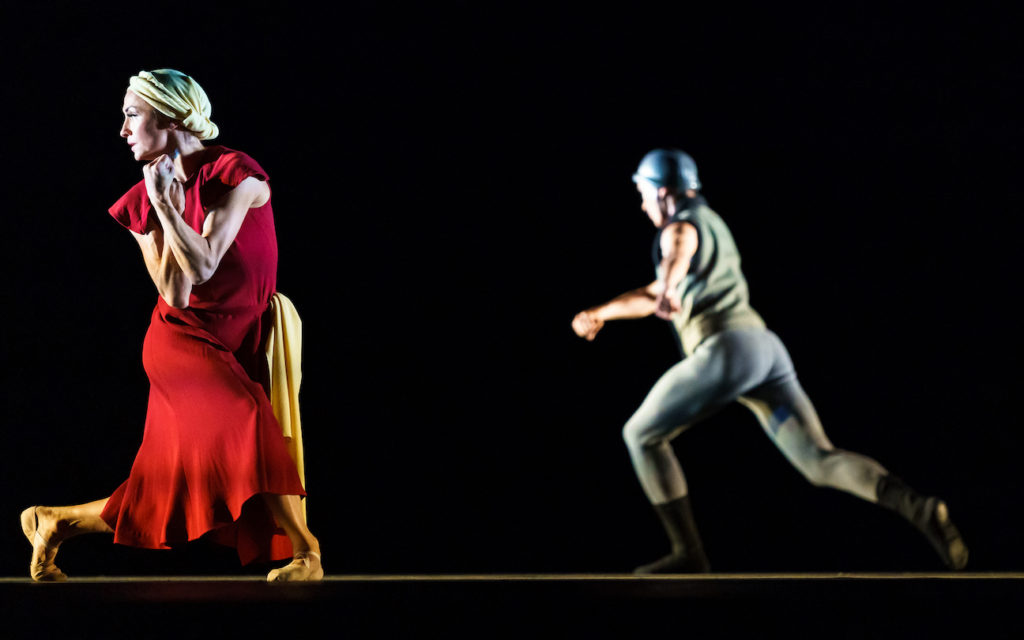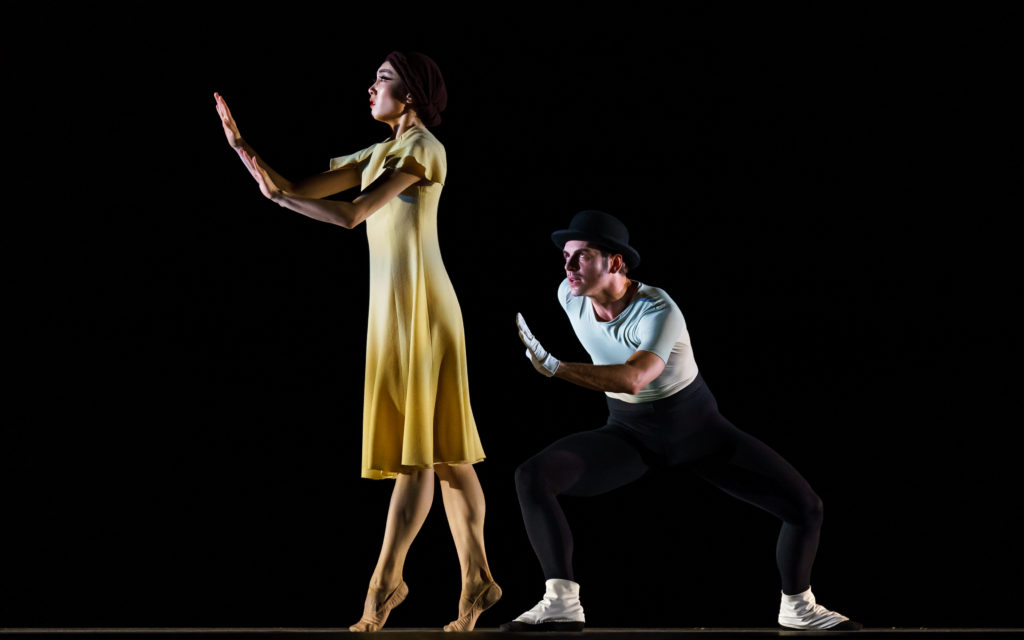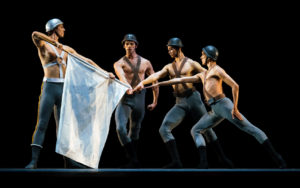In a Time of War: Dutch National Ballet takes action - Vancouver Ballet Society
- Home
- Reviews 2020 - 2023
- In a Time of War: Dutch National Ballet takes action

By Jeannette Anderson
Instead of opening its season with the planned mixed bill Celebrate!, Dutch National Ballet made a timely change in programming with the more somber triple bill, Shadows, featuring Kurt Jooss’ iconic 1932 anti-war ballet, The Green Table. Company director Ted Brandsen explained in a program note that they did so because Jooss’ ballet is “very relevant to the times we’re living through … which are marked by the dreadful war still raging in Ukraine.” The day before Shadows opened on September 13 in Amsterdam, Oleksandr Shapoval, who had retired from the ballet at the National Opera of Ukraine in 2021, was killed on the battlefield defending his country, underscoring The Green Table’s relevance.
The Green Table begins and ends with 10 men in tailcoats negotiating around a table. At times they freeze a movement as in a photo, taking a gesture of power like those we see every day in the media. Their first round of negotiations ends with each of them pulling a gun and firing a shot. In the following six heart-wrenching scenes, the consequences of these shots unfold. Soldiers enthusiastically enlist, a mourning mother (Hannah de Klein) and fiancée (Salome Leverashvili) are left behind. The Flag Bearer (Victor Caixeta) marches with a white flag, ironically the symbol of surrender or ceasefire. A Profiteer (Joseph Massarelli) steals a ring from one of the dead soldiers, and later offers a prostitute (Erica Horwood) to the soldiers.

Amongst them wanders the ever-present Death (Pascal Johnson), half skeleton, half warrior. His movements, derived from Ausdruckstanz (German Expressionistic dance), are expressive, strong, and grounded. You hear his stamping feet above the score for two pianos, by F.A. Cohen, Jooss’ long-time collaborator. The earthbound movements of Death create a strong contrast to the more balletic style of the living. The Prostitute, in pointe shoes, engages with the soldiers with a lightness that lends her a vapour-like appearance, as if almost not being there is the only way she can endure her visible revulsion. With elongated, panther-like movements, the Profiteer steals like a thief upon his prey.

Dutch National Ballet first performed The Green Table in 1965. It was staged this time round by Jeannette Vondersaar, a former principal with the company, who for many years danced the Partisan. The staging rights to the ballet were passed to Vondersaar upon the death in 2010 of Anna Markard, Jooss’ daughter, with the condition that nothing is changed in the original choreography, so the white flag was not substituted by the Ukrainian one, though it might well have been.
In any case, The Green Table is a timeless piece about all wars, confronting us with the fates of ordinary people who are victims of powers and decisions on which they have no influence. The dancers masterfully expressed the ballet’s complex range of emotions from enthusiasm to despair and fear until, finally, the unabashed victory of Death.

Dutch National Ballet has taken a clear stance against the Russian war in Ukraine and supports all dancers sharing their point of view. They have given Olga Smirnova from the Bolshoi and the Brazilian Victor Caixeta, who left the Mariinsky, full contracts for a year, and extra spots were created in their Junior Company for four dancers, three from Ukraine and one from Russia. These new positions are sponsored by fundraising.
The Green Table was preceded by two pieces, a new ballet Regnum, to Mozart’s Symphony No. 25 for 22 dancers, by the company’s Young Creative Associate Milena Sidorova. The ballet, which ends with the opening of a large black door into what looked like burning hell, is about power and the means people use to gain it in personal relationships and in society as a whole. But the power plays between groups and/or individuals were negated by Mozart’s score, which is full of life and joyfulness.

The other piece was Wayne McGregor’s Yugen (the title means sublime beauty in Japanese), to Leonard Bernstein’s Chichester Psalms. This co-production with the Royal Ballet premiered in London in 2018, its Dutch premiere delayed until this year due to COVID-19. Yugen opens with dancers standing in backlight in huge rectangular niches, reminiscent of saints in a church. Dressed in red, they engage in all kinds of playful relationships. The ballet felt like a glimmer of hope between the two darker works.
Not far away in Switzerland, Zürich Ballet also took up the theme of war this season, in a full-length ballet that premiered on September 30, and runs until November 15. Nachtträume (Night Dreams) by Spanish choreographer Marcos Morau is based on Jooss’ The Green Table, though not, as he said in an interview, a kind of sequel. But by having the dancers express different sorts of power, Morau, too, wishes to make people reflect upon the current political situation.

